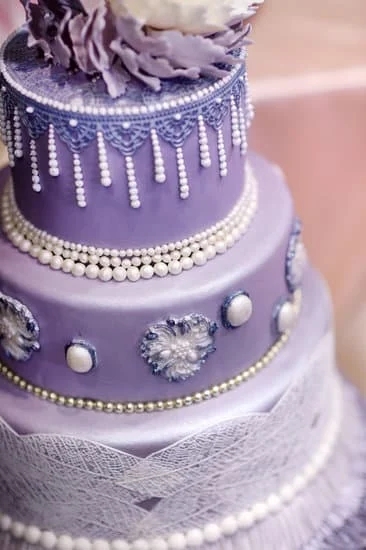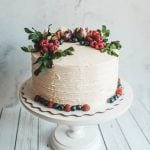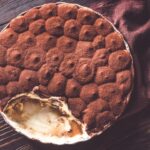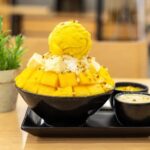Chocolate icing is a crucial component of cake decorating, adding not just flavor but also visual appeal to a baked creation. In this article, we will delve into the art of making chocolate icing for cake decorating, providing a step-by-step guide on how to achieve the perfect consistency and flavor for your cakes.
Whether you are a novice baker or an experienced pastry chef, mastering the technique of making chocolate icing can elevate your baking game and impress your family and friends.
To make delicious and smooth chocolate icing, essential ingredients such as cocoa powder, powdered sugar, butter, and vanilla extract are required. These key components work together to create a creamy and luscious texture that is perfect for spreading or piping onto cakes. By understanding the role of each ingredient in the icing recipe, you can easily customize it to suit your taste preferences and achieve a professional finish on your baked goods.
In the upcoming sections of this blog post, we will provide detailed instructions on how to make chocolate icing from scratch, including melting the chocolate properly and incorporating other ingredients until achieving a smooth consistency. Additionally, we will share valuable tips on how to troubleshoot common issues that may arise during the icing-making process.
With our guide, you will be equipped with the knowledge and skills to create stunning cake designs using different variations of chocolate icing for various occasions.
Essential Ingredients for Chocolate Icing
When it comes to chocolate icing for cake decorating, having the right ingredients is crucial to achieving a smooth and delicious consistency. Here are the essential components you’ll need to create the perfect chocolate icing:
- Cocoa Powder: Cocoa powder is the key ingredient that gives chocolate icing its rich flavor and color. Make sure to use high-quality cocoa powder for the best results.
- Powdered Sugar: Also known as confectioner’s sugar, this ingredient is essential for adding sweetness to the chocolate icing while helping to thicken it up.
- Butter: Butter adds creaminess and richness to the chocolate icing. It’s important to use softened butter at room temperature for easy mixing.
- Vanilla Extract: While optional, adding a splash of vanilla extract enhances the overall flavor of the chocolate icing.
To make your chocolate icing stand out, consider using dark chocolate or milk chocolate depending on your preference. You can also experiment with different variations such as white chocolate icing for a unique twist on traditional chocolate frosting. Whichever type of chocolate you choose, these essential ingredients will ensure your chocolate icing is smooth, creamy, and full of flavor.
Now that you have a list of key ingredients needed for making delicious and smooth chocolate icing, let’s move on to the step-by-step instructions on how to create this delectable frosting.
Step-by-Step Instructions on Making Chocolate Icing
Chocolate icing is a key element in cake decorating as it not only adds to the visual appeal of the cake but also enhances its flavor. Making chocolate icing from scratch may seem daunting, but with the right ingredients and techniques, you can achieve a smooth and decadent topping for your cakes. In this section, we will provide you with a step-by-step guide on how to make chocolate icing for cake decorating at home.
To start making chocolate icing, you will need essential ingredients such as cocoa powder, powdered sugar, butter, and vanilla extract. These ingredients work together to create a rich and creamy icing that is perfect for decorating cakes. The quality of your ingredients will greatly impact the final taste and texture of your chocolate icing, so it’s important to use high-quality cocoa powder and real butter for the best results.
| Ingredients Needed | Quantity |
|---|---|
| Cocoa Powder | 1/2 cup |
| Powdered Sugar | 2 cups |
| Butter (unsalted) | 1 cup (room temperature) |
| Vanilla Extract | 1 teaspoon |
By following these step-by-step instructions on making chocolate icing for cake decorating, you’ll be able to create beautiful and delicious cakes that are sure to impress your family and friends. Don’t be afraid to get creative with different variations of chocolate icing or explore various decorating techniques to add your personal touch to each cake creation.
Tips for Achieving the Perfect Chocolate Icing Consistency
When it comes to making the perfect chocolate icing for cake decorating, achieving the right consistency is key. This can make or break the overall look and taste of your cake creation. One essential tip for ensuring the ideal consistency is to start with proper measurements of your ingredients. Too much or too little of any component can throw off the balance and texture of your chocolate icing.
Another important factor in achieving the perfect consistency for chocolate icing is the mixing technique. Be sure to mix your ingredients thoroughly but without overmixing, as this can lead to a grainy or oily texture in your icing. Use a stand mixer or hand mixer on low speed to combine the ingredients smoothly and evenly.
In addition to measurements and mixing techniques, one trick for achieving a smooth and spreadable chocolate icing is ensuring that your butter is at room temperature before incorporating it into the mixture. Softened butter blends more easily with other ingredients and helps create a silky texture in your icing. Remember that patience is key when making chocolate icing – take your time with each step to achieve the desired consistency for flawless cake decorating.
| Tip | Importance |
|---|---|
| Proper Measurements | Ensures balance and texture of chocolate icing |
| Mixing Technique | Thorough mixing without overmixing prevents grainy or oily texture |
| Room Temperature Butter | Aids in creating smooth and spreadable chocolate icing |
Different Variations of Chocolate Icing
Chocolate icing comes in a variety of flavors to suit different preferences and tastes. One popular variation is dark chocolate icing, known for its rich and intense cocoa flavor. To make dark chocolate icing, simply use high-quality dark cocoa powder and adjust the sugar level to balance the bitterness of the chocolate. Dark chocolate icing pairs well with chocolate cakes or those with bold flavors like coffee or citrus.
On the other hand, milk chocolate icing offers a milder and creamier taste compared to its dark counterpart. To make milk chocolate icing, use a combination of milk chocolate chips or bars along with cocoa powder for a smooth and silky finish. This type of icing is perfect for those who enjoy a sweeter and less intense chocolate flavor. Milk chocolate icing is ideal for decorating vanilla cakes or as a filling for macarons.
For a more decadent and luxurious option, white chocolate icing provides a creamy and sweet alternative to traditional chocolate icings. Made from white chocolate chips or bars, this type of icing has a buttery flavor with hints of vanilla. White chocolate icing is versatile and can be tinted with food coloring for vibrant designs on cakes. It complements desserts like red velvet cake or lemon cupcakes beautifully.
Experimenting With Flavors: Mixing Different Types of Chocolate Icings
For those who love variety, you can also experiment by mixing different types of chocolate icings to create unique flavors. For example, combining dark and milk chocolate icings will result in a bittersweet taste with a creamy texture. Similarly, blending white and dark chocolate icings can offer a balance of sweetness and richness. Don’t be afraid to get creative and develop your signature blend of chocolate icing flavors to impress your guests with your baking skills.
Decorating Techniques With Chocolate Icing
When it comes to cake decorating, chocolate icing can be a versatile and delicious medium to work with. From elegant swirls to intricate designs, mastering various decorating techniques can truly elevate the appearance of your cakes. Here are some popular methods for using chocolate icing to create stunning designs:
- Piping: Piping is a classic and versatile technique that involves using a piping bag to create decorative patterns or writing on the cake. To pipe with chocolate icing, fill a piping bag fitted with a desired tip, such as a round or star tip, with the icing. Then, gently squeeze the bag while moving it in a steady motion to create intricate designs or borders on the cake.
- Spreading: Spreading chocolate icing evenly over the surface of a cake can result in a smooth and polished finish. To achieve this, use an offset spatula or butter knife to spread a generous amount of icing on top of the cake. Work from the center outward, ensuring an even layer across the entire surface.
- Drizzling: Drizzling chocolate icing over a cake can add an elegant touch and enhance its visual appeal. To drizzle effectively, place melted chocolate icing in a small piping bag or ziplock bag with the corner snipped off. Hold the bag above the cake and gently squeeze to create thin lines of drizzled chocolate over the top.
These decorating techniques allow you to experiment and get creative with how you adorn your cakes using chocolate icing. Whether you’re looking for precision in piping intricate designs or aiming for simple elegance through spreading or drizzling, each method offers its unique charm and aesthetic appeal.
Remember that practice makes perfect when it comes to cake decorating techniques. Don’t be afraid to try different approaches and find what works best for you. With patience and creativity, you’ll soon master these techniques and be able to create visually stunning cakes that will impress your friends and family.
So go ahead, grab your piping bag and spatula, and let your imagination run wild as you explore the wonderful world of decorating techniques with chocolate icing.
Troubleshooting Common Chocolate Icing Issues
When making chocolate icing for cake decorating, it is not uncommon to encounter some common issues that may affect the final outcome of your creation. One of the most frequent problems faced by bakers is dealing with lumps in their chocolate icing.
Lumps can form due to improper melting of the chocolate or adding the ingredients too quickly. To avoid this, it is essential to melt the chocolate slowly over low heat and gradually add in other ingredients while continuously stirring to ensure a smooth consistency.
Another issue that bakers often encounter when making chocolate icing is having a consistency that is either too thin or too thick. Achieving the perfect consistency for chocolate icing is crucial for both taste and aesthetic purposes.
If your icing turns out too thin, you can thicken it by adding more powdered sugar gradually until you reach the desired thickness. On the other hand, if your icing is too thick, you can adjust it by incorporating additional liquid such as milk or cream little by little until you achieve the right texture.
In addition to lumps and consistency problems, another common challenge when making chocolate icing is achieving a shiny finish on the cakes. To enhance the appearance of your cakes, you can add a small amount of corn syrup or honey to your chocolate icing mixture.
This will help create a glossy sheen on your icing once applied to the cake. By following these troubleshooting tips and techniques, you can overcome common chocolate icing issues and create beautifully decorated cakes that will impress your family and friends.
Creative Ideas for Chocolate Icing Cake Designs
In conclusion, mastering the art of making chocolate icing for cake decorating opens up a world of creative possibilities. Whether you are looking to create a simple yet elegant layer cake or intricate themed cakes for special occasions, the right chocolate icing can take your creations to the next level. By following the step-by-step instructions and tips provided in this article, you can confidently experiment with different variations of chocolate icing to cater to various preferences.
The key to achieving the perfect chocolate icing consistency lies in using high-quality ingredients and paying close attention to measurements and mixing techniques. Remember that practice makes perfect, so don’t be discouraged if your first attempts don’t turn out as expected. With patience and persistence, you will soon master the art of creating smooth and delicious chocolate icing that will impress your family, friends, and clients.
From classic dark chocolate icing to creamy milk chocolate and indulgent white chocolate variations, there is something for every taste bud. Experiment with different decorating techniques such as piping, spreading, and drizzling to add a personal touch to your cakes.
And when troubleshooting common issues like lumps or inconsistent consistency, refer back to this guide for quick solutions. So go ahead, unleash your creativity with chocolate icing and let your imagination run wild in designing beautiful and delectable cakes that will leave everyone craving for more.
Frequently Asked Questions
What Is the Difference Between Chocolate Frosting and Icing?
Chocolate frosting and icing differ primarily in their texture and ingredients. Frosting tends to be thicker, creamier, and richer in flavor due to the presence of more butter or cream. Icing is thinner, glossier, and made with powdered sugar for a smoother consistency.
What Is Chocolate Frosting Made Of?
Chocolate frosting typically consists of cocoa powder or melted chocolate combined with butter, powdered sugar, milk or cream, and sometimes vanilla extract for flavor. The ratio of these ingredients determines the consistency and sweetness of the frosting, with variations possible based on personal preference.
Why Does Chocolate Frosting Get Hard?
The hardening of chocolate frosting can be attributed to the cooling and solidification of the fats present in the mixture, especially from the butter or shortening used. Additionally, exposure to air can lead to evaporation of liquid components like milk or water, contributing to a firmer texture over time.

Welcome to our cake decorating blog! My name is Destiny Flores, and I am the proud owner of a cake decorating business named Cake Karma. Our mission is to provide delicious, beautiful cakes for all occasions. We specialize in creating custom cakes that are tailored specifically to each customer’s individual needs and tastes.





